Real life is complicated, and often too complicated to be fully understood by humans. Short and simple explanations are most times superficial, misleading, or plain wrong. Yet, to accommodate the hurried reader, who lacks time or energy to plow through a text larger than a few Twitter messages, here is nevertheless an attempt of compressing the analysis of the Syrian conflict into a few sentences, which is admittedly still a lot in comparison to Western journalists, who are even able to explain this war in only four words, which are:
Assad has to go.
This demand is constantly reiterated by the Western players in the Syrian tragedy and Assad’s departure is portrayed as the ultimate solution of the conflict and the only way to end the suffering of the Syrian population.
And yet, perspicuous and plausible as it seems, a critical mind will nevertheless ask the question: Why has Assad to go?
Here is the answer:
Syrian President Bashar al-Assad has to go because:
1) Turkey in the north wants to use the waters of Euphrates and Tigris alone and not share it with Syria and Iraq, while Israel wants to keep the water rich Golan Heights. Israel also wants to conquer the Litani river area in southern Lebanon, and Hezbollah, a close ally of Syria, is in the way.
2) Qatar wants to have a pipeline crossing Syria to transfer gas to Europe.
3) Saudi Arabia, UAE, and fellow Arab monarchies consider any secular and socialist Arab government as a threatening example of an alternative system and want to prevent a Shiite dominated axis consisting of Iran, Syria, Hezbollah, Iraq.
4) Israel loves the chaos in the surrounding Arab countries. Syria was the biggest supporter of the Palestinian cause.
5) The MIC (military industrial complex) lobbyists need continuous war to boost profits, Pentagon and CIA need war to justify their excessive funding and to increase their influence. Syria buys weapons from Russia and not from the USA.
6) The USA plays the longterm geopolitical game of a destabilization push from Syria to Iran to Central Asia, North Caucasus, Volga region (Russia’s “soft underbelly” with a significant Muslim population).
The hurried reader can log off now, but for visitors who have a little spare time the following text tries to explain some additional aspects of the Syrian conflict:
Erdogan against the Kurds (and everybody else who gets in his way)
Turkish President Recep Tayyip Erdogan’s dream of the glorious restoration of the Ottoman empire coalesce nicely with the Salafi-jihadi objectives of turning the whole world (or at least as much of it as possible and viable) into an Islamic State run by Sharia law.
Ideologically speaking, there is no difference between Erdogan, IS (Islamic State), Jabhat al-Nusra, Ahrar al-Sham, and other jihadi fighters. They are all driven by the same doctrine, based on a special Quranic interpretation, Islamic supremacy, and misogyny.
For Erdogan, the path to sharia at the moment is through the ballot box. “Democracy” he once said, “is like a streetcar. You ride it until you arrive at your destination and then you step off.”
The outcome of the elections on November 1 will likely be the same as the prior one in June. If Erdogan’s AKP again fails to win the majority, he will let negotiations fail, install another temporary government, and call new elections in spring. Meanwhile he can fortify his presidential empire and degrade the prime minister and cabinet to mere servants.
He will have time to create a judicial case against the Kurdish HDP party to keep it out of a third election round. He will have time to raid more media that are not toeing his line (the media group Koza Ipek, with ties to Gulen, was just stormed and closed).
Erdogan has several regional opponents which are in they way: the Kurds, Syria, the Shia (in Iran, Lebanon, Syria). Fethullah Gulen is an internal rival, used by the USA, but he is not ideologically different.
Kurds are one of the worlds biggest ethnic groups without a state, their population is approximately 32 million, 20 million in Turkey alone. If Kurds are able to establish an autonomous region in northern Syria (the Rojava cantons of Afrin, Kobane, Jazira), it could embolden Turkeys Kurds to seek increased autonomy.
Since October 24 Turkey is attacking Kurdish positions across the Syrian border in Kobane and Tal Abyad mainly with machine guns and sniper fire, but also with mortars and tank guns.
Until now no members of the Kurdish YPG/YPJ self defense forces were killed, but at least three civilians were wounded.
The attacks are apparently closely coordinated with IS (Islamic State) terrorists, who simultaneously started an offensive in western and southern Kobane areas, using heavy weapons. The villages of Shikayf and Mirvah in the countryside of the town Sarrin are under heavy pressure, the villages Jade and Mikhara, Ain Issa endure mortar attacks.
Turkish Prime Minister Ahmet Davutoglu confirmed two attacks against the YPG/YPJ in a TV interview, explaining that the army carried out strikes on Kurdish forces as a warning to the fighters against expanding their control into parts of Syria that Turkish officials hope will serve as a safe zone and as a base for Islamic militants backed by Turkey.
“If the YPG moves to the west of the river Euphrates, we will hit it,” Davutoglu said in the interview. “We have already hit two times.” Turkey considers the river a “red line.”
Turkish politicians have warned US officials that they oppose an increased cooperation by the USA with Kurdish YPG fighters, who they consider to be terrorist forces aligned with the PKK (Kurdistan Workers’ Party), an organization against which Turkish troops conduct an intensive campaign including martial law in southern Turkish provinces, curfews (Cizre), the rounding up of suspected Kurdish activists, and air strikes against targets in Iraq.
The US military dropped 112 pallets with 50 tons of ammunition and small arms to fighters in Syria’s Hasakah province. While the Pentagon said, that none of the supplies had been given directly to Kurdish forces and it was rather intended for Arab rebels (Democratic Forces of Syria) aligned with the YPG via the Euphrates Volcano operation room, officials privately acknowledged, that most of the air-dropped material came down in YPG/YPJ controlled areas. YPG commander Sipan Hemo also acknowledged, that the Kurds have received the airdrops.
Mustafa Bali, a Kurdish official from Kobane, informed journalists earlier that the USA had delivered 120 tons of weapons and ammunition to the YPG/YPJ, though this was later denied by all parties.
Turkey summoned the US ambassador in Ankara to complain about the weapons drops and has since continuously heightened the rhetoric, threatening a military intervention into Syria.
Erdogan accused the USA of double standards and claimed that the YPG allegedly carried out ethnic cleansing of Arabs and Turkmen in Northern Syria, equating US support for the Kurdish militias to aiding terrorism. “They don’t even accept the YPG as a terrorist organization. What kind of nonsense is this?” he said. “The West still has the mentality of ‘my terrorist is good, yours is bad.’”
Both Russia and the USA court the Kurds, very much to the chagrin of Turkey. Russian Deputy Foreign Minister Mikhail Bogdanov claimed that Russian officials have been consistently in contact with YPG/YPJ forces on the ground.
Salih Muslim, co-chair of the PYD (the political wing of YPG/YPJ), visited Moscow and spoke with Minister Bogdanov. After that meeting, a Kurdish delegation, led by PYD Co-chair Asya Abdullah, participated in a conference about “The Perspectives of Establishing an International Anti-IS Coalition.”
The Kurds need to close the gap between the Afrin and Kobane cantons to create a contiguous area along the Turkish border. The gap between Kobane and Jazira has already been closed with the fall of Tal Abyad, which was a major blow for IS. In order to close the gap between Afrin and Kobane, the YPG/YPJ would have to cross to the western bank of the Euphrates River to expel IS from the main town of Jarablus. The distance from Afrin to Jarablus is 110 kilometers, and militarily this is achievable, though the population in these areas consists mainly of Arabs and Turkmens and Kurds are the minority.
Yet, this is the main supply line for Jabhat al-Nusra, Ahrar al-Sham, and all other fractions of Jaish al-Fatah (Army of Conquest). It is also, after the fall of Tal Abyad, the only supply line from Turkey to IS. If the Kurds would be able to cut this supply line, Aleppo would fall and the Syrian army could just mop up the terrorist groups who would soon run out of ammunition, food, cigarettes, and captagon.
The Syrian conflict would have been decided.
Turkey will do everything to keep this supply corridor open and for that reason Erdogan constantly pushes for a “no fly zone”, or “safe zone” in this region. Jarablus lies between Kobane and the Azaz-Marea line, which Turkey has declared a red line.
According to the Turkish Daily Sabah, “Turkish airplanes hit two YPG boats trying to infiltrate to the west of the Euphrates. Militants in the boat were warded off.” Sabah also carried reports that the YPG had been trying to infiltrate the area from Azaz east to Jarablus, which Turkey considers a safe zone.
If Russia starts cooperating with the Kurds and gives them air support in an offensive against Jarablus, it could mean war between Turkey and Russia with deadly air battles of F-16 against SU-30SM. NATO has wisely removed the Patriot missile batteries and Turkey normally could not claim NATO Article 5 support, if the battles are on Syrian territory, but who knows?
Who will blink first?
The USA wants to use the Kurds for an offensive against the IS capital Raqqa, fearing that Russia’s air campaign will make the US-led anti-IS coalition look more and more absurd and ludicrous. The Wall Street Journal reports, that the US administration considers the deployment of ground forces embedded among Kurdish troops.
Just like Turkey, the USA uses IS to weaken the Syrian and Iraqi state institutions. US air strikes against IS in Syria have mainly targeted crucial infrastructure, like oil fields, refineries, and power plants. The recent US air strikes against power stations in Aleppo cut the supply of electricity and of pumped water to the city for several days, causing another flood of refugees (the wave of refugees is now explained by Western media as a result of the Syrian offensive against rebel occupied districts in the city, which is laughable because the rebel districts are nearly emptied of civilians and most people have fled to government controlled areas).
For the USA IS has three purposes. It first creates chaos in Syria and Iraq, it second opens the door for a military intervention (no fly zone) in Syria, and third is an entrapment scheme, where all undesirable and unneeded young men are gathered in certain places to be easily targeted and whipped out (the barren lands of Iraq and Syria are ideally suited for that purpose).
But for Turkey IS is a pet project, IS is their baby which they want to nurture and grow as long as possible. This is a significant difference which complicates the relations between Washington and Ankara a lot.
Turkey’s support for terrorism
One cannot blame Erdogan of timidity, hesitation, or moderation. His moves are bold, shameless, and exceptionally evil. In this respect he is very similar to Benjamin Netanyahu, they both are demagogues, racists, and fascists. While the late, great Muammar Gaddafi was undeservedly called a “mad man” by Western propagandists, these two plus the various Saudi princes are the real mad men of the Middle East.
On a side note, the Saudi royals have not the same weight as Erdogan and Netanyahu, they are just tools and fools, not clever enough to understand what they are doing. They are clueless, aloof, degenerated parasites, acting like spoiled children who constantly break their toys and cry for new ones. But all that doesn’t matter as long as they reliably provide oil to the West and buy weapons from the USA for distributing them to the various terrorist groups.
Back to Erdogan’s Turkey.
Turkey has supported Islamic terrorists with all needed materials, it has facilitated the selling of looted industrial equipment (mainly from Aleppo), antiquities, and oil by IS and other Islamists. Turkeys spy agency MIT has provided intelligence and logistical support to the terrorist groups.
MIT boss Hakan Fidan, Erdogan’s staunchest ally, in his own words: “IS is a reality and we have to accept that we cannot eradicate a well-organized and popular establishment such as the Islamic State; therefore I urge my Western colleagues to revise their mindset about Islamic political currents, put aside their cynical mentality and thwart Vladimir Putin’s plans to crush Syrian Islamist revolutionaries.”
When MIT truck convoys with weapons for IS were intercepted by regional police, the involved officers, prosecutors, judges were removed from their posts and prosecuted.
Wounded Islamic fighters are treated in special wards of military hospitals, IS cells, coordinators, and recruiters are monitored but never hindered in their activities.
IS operatives are allowed to clear out Syrian opponents who fled to Turkey. The beheaded bodies of Ibrahim Abdul Qader and Fares Hamadi were just found in Sanliurfa, 55 kilometers from the Syrian border. Abu Mohammad was founder of RBSS (Raqqa Is Being Slaughtered Silently), an activist group which regularly publishes information, photos, and videos about IS abuses in Raqqa, from arbitrary detentions and public executions too a ban on private Internet connections and the issuing of identity cards.
When an IS suicide bomber killed 33 social activists and wounded 104 others in the Turkish town of Suruc right across the border to Kobane, it was clear that this attack could not have happened without knowledge and acquiescence by the MIT. The social activists were just giving a press conference about their planned trip to help reconstruct the by IS devastated town of Kobane.
Turkey used this terrorist act as an excuse to start its military campaign against the PKK.
When two IS suicide bombers killed 104 people and injured 400 others at Ankara Central railway station, it became soon clear that the crime couldn’t have been committed without collusion or complicity of the security forces. This bombing targeted a “Labour, Peace and Democracy” rally organized by trade unions and Kurdish groups.
This attack was the deadliest of its kind in Turkey’s modern history, and yet, many people fear that the worst is yet to come.
Russia and Turkey
Until now Turkey and Russia have managed to keep their political disputes away from the substantial economic relations. But Erdogan now has made first references to possible sanctions against Russia. He said, that Turkey could stop its natural gas purchases from Russia, which supplies more than 55 percent of Turkey’s needs, and award the building of the 20 billion US$ Akkuyu nuclear power station to another, non-Russian contractor.
BOTASS, Turkey’s state-owned gas and oil trader, has asked the ICC (International Chamber of Commerce) to arbitrate in an emerging pricing dispute about gas. Turkish Energy Ministry officials told Reuters, “We had agreed with Russia on a 10.25 percent discount, and this has not been put in effect due to various excuses. We are confident that we will get this discount through arbitration.”
Surprisingly Russia instantly took preemptive measures and stopped issuing transit passage documents to Turkish trucks carrying Turkey’s exports to Kyrgyzstan, Kazakhstan, Tajikistan, and Mongolia. Gazprom turned down a Turkish request for an additional 3 billion cubic meters of natural gas for 2016 and declared that it will cut by half the capacity of the proposed 16 billion US$ Turkish Stream natural gas pipeline project or even postpone the project.
Russia further exerts pressure by stiffening its inspections of Turkish foodstuffs and making border crossings more tedious. By rejecting tons of Turkish fruits and vegetables, Russia has been warning that it is capable of inflicting severe damage to Turkey’s exports.
The number of Russian tourists to Turkey has declined because of Western sanctions, and the decline accelerated after the IS bomb attack in Suruc. The Russian Federal Tourism Agency warned the Russian public that the threat of terrorism is growing in Turkey and told people to avoid traveling there.
Erdogan’s economic threats as a reaction to Russian operations in Syria are not a realistic approach. The natural gas agreement between Turkey and Russia is a long-term one that requires Turkey to keep paying for gas even if it stops importing gas.
The bilateral agreement on the Akkuyu nuclear power station was signed and approved by the Turkish parliament. If Turkey decides to halt the project or award the contract to another company, it first has to convene the parliament to abrogate the agreement and it will have to pay heavy compensation.
Russia to the rescue
The following text contains detailed reports from the battlefield which may be confusing, but these detail are included to show that this is now a big war, involving nearly the whole Middle East and most world powers. This war gets more intense and bloody by the day, though one hardly can imagine that it can get worse. Some involved parties realize that this could be the start of WW III, while others still pour oil into the fire.
The Russian air campaign is not a cakewalk. It is impeded by the dry and dusty climate, which wears out the equipment and is especially dangerous for the airplanes. There are regular sandstorms. The campaign is further hindered by communication and coordination problems because of different languages. There are not enough Russian officers who speak Arabic and not enough Syrian officers who speak Russian.
Two Ilyushin-20, Russia’s top-line intelligence-gathering aircraft, collect data, the mobile Borisoglebsk 2 electronic warfare system, fitted into 9 MT-LB APCs, is stationed on mount Nabi Yunis, but the collected data has to be interpreted by analysts far away and the jamming of radar and communication can be circumvented. The Russian’s are not able to decipher heavy encrypted messages, even the NSA experts in Utah’s “Bumblehive” with their Cray XC30 supercomputers have difficulties to do that.
The Islamic terrorists have mounted stiff resistance, emboldened by new supplies of TOW’s (Tube-launched, Optically tracked, Wire-guided), with whom they destroyed dozens of Syrian military vehicles, causing heavy casualties. The West seems to have supplied new long-range anti-tank systems, which are more effective than the ones provided until now.
The Syrian offensive in Idlib has stalled after initial gains. The Idlib surrounding of Jabhat al-Nusra did not happen because of counter attacks which forced the army to relocate troops to attacked areas. The Islamic fighters engage in guerrilla warfare, using small commando groups that penetrate deep into government territory, firing 10 to 20 mortar rounds, and leaving their positions so fast that it’s almost impossible to detect and eliminate them.
The Islamists try to expand the frontline into the deeper desert to overextending the Syrian troops and create additional logistical problems for the attacking forces. Spreading across a wide area also avoids clusters of targets which could be attacked by Russian jets.
IS commandos seized territory which is vital to the Syrian government’s logistical lines, taking control of at least 10 Syrian checkpoints along the supply line running from Hama through Salamiyeh, Ithriyah and Khanasser to Aleppo.
The USA has at the moment stopped air strikes to allow IS and Jabhat al-Nusra to move hundreds of fighters and heavy equipment into the corridor. IS attacked the supply road from the east while at the same time Jabhat al-Nusra attacked it from the west. The offensive started with suicide car bombs against army checkpoints which suddenly had to defend themselves against attacks from all sides.
Initially IS was able to cut the Khanasser Highway, pushing further west towards the strategic city of Ithriyah in east Hama. The Palestinian resistance militia Liwaa Al-Quds and Hezbollah had to come to the rescue and the supply corridor is now open again though still endangered.
One has to wonder, if there is, after all the bombing and fighting, any road left to be used for supply convoys.
The Syrian forces have temporarily halted their offensive operations in Aleppo province as they scramble to secure the threatened corridor. The temporary closure of the supply route also led to additional hardship for the nearly two million people in the government held parts of Aleppo because prices for food and gasoline exploded.
IS launched a large-scale offensive at the Syrian government stronghold Al-Safira. According to reports, IS began their assault at the northern district of the town where they captured several building blocks. If IS captures Al-Safira, they will cut supplies for large numbers of Syrian troops in Aleppo province and take control of the sprawling army bases surrounding the city.
In Hama the Syrian army took over the Umm Haratein-Atshan-Tell Skik line and important bases and supply corridors of the Islamists between central and northern Syria are threatened. The regions under the Syrian army’s control have been merged with lands that constitute a strategic depth for the Islamic groups and the new front is only a few kilometers away from al-Tamanah, one of the most important strongholds of rebel groups in the east. If the army is able to conquer the border area between Hama’s countryside and Idlib’s countryside, it will change the entire Syrian battlefield map.
In the last month Iran has deployed several thousand soldiers (including Iraqis, Afghans, Azeris, and Pakistanis) to Syria’s coastal provinces Tartus and Latakia in preparation for a large-scale assault that is supposed to start in the coming weeks.
This will be a bloody battle, but Iran is apparently prepared to pay the price. According to Iranian journalists, 16 soldiers have been killed since October 24 in Aleppo province, including 6 officers from the IRGC (Iranian Revolutionary Guard Corps). All together 31 soldiers and high ranking officers from the IRGC and the Iranian-backed “Fatimeyyoun Division” (predominantly Afghans) have been confirmed “killed-in-action.”
The Russian military appears to be preparing for all kind of contingencies dependent on the outcome of the multi-party negotiations in Vienna on the future of Syria. These contingencies include reinforcing or rotating the aircraft contingent in Syria, using a second airbase, deploying special operations troops to help identify targets and guide aerial and artillery munitions, deploying a ground combat continent to fight alongside the Syrian army, and even sending the Admiral Kuznetsov aircraft carrier to the Mediterranean Sea or the Persian Gulf.
There are reports that Tu-22M3 (or M5) heavy bombers have been moved to the Mozdok air base in North Ossetia, which also functions as a staging point for flights servicing the Russian contingent in Syria. The deployment suggests that these aircrafts are being prepared to launch strikes against Islamists.
Nearly all Russian planes are equipped with an electronic targeting system based on GLONASS (Global Navigation Satellite System) which enables precise targeting even with free falling (dumb) bombs. This system though can only be used against stationary targets, moving targets like supply convoys and motorized troops have to be attacked with laser guided missiles which are costly and in short supply.
There is an increase in the pace of aerial munition deliveries and munitions plants work around the clock on a three-shift basis, but at the moment the stocks of munitions used in the bombing campaign cannot be replenished fast enough.
All other weapons producers also work overtime and at the limit of their capacities. Two Su-34s aircraft were assigned to the Lipetsk-based operational conversion unit for training crews to operate the bombers. This delivery increases the number of Su-34s in Russian inventory to 76.
A number of Russian vehicles, weapons, and soldiers have been seen in the vicinity of Latakia in recent days. It is not known whether their function is to protect the Hmeymim airbase or to participate in offensive ground operations in support of the Syrian army.
Western “boots on the ground”
US Defense Secretary Ashton Carter announced that the Pentagon is contemplating “direct action on the ground” in both Iraq and Syria, “in an effort to combat the self-proclaimed Islamic State terrorist group.”
In strategic leaks to media outlets it was revealed, that US President Obama plans to send approximately 50 Special Operations soldiers to “ensure that weapons and other supplies are delivered to moderate forces whom the USA supports.”
All this is not new, because the Pentagon, together with NATO, Turkey, Israel, and the Gulf states, has routinely dispatched their military advisers, special forces, and intelligence operatives to the Syrian war theater. These foreign forces have operated within rebel ranks from the onset of the war in March 2011.
There are operation rooms in Turkey and Jordan, Western liaison officers have to make sure that the Islamic militants understand and follow the commands.
As already mentioned, the US administration considers the deployment of ground forces embedded among Kurdish troops or the “moderate” opposition.
Qatar announced that it is contemplating sending ground troops to Syria.
Western agents have always been present in Syria disguised as aid workers (USAID, White Helmets aka Syria Civil Defense) or embedded in UN agencies and the Red Crescent.
It seems though that the West intends to increase the infiltration and needs to prepare the public for the case that Western troops are captured or killed. In the last weeks the US Air Forces Central Command has stationed helicopters and airmen at Turkey’s Princlic (Diyarbakır) air base in order to help with rescue and recovery operations in Syria and Iraq.
The environmental and economic angle
Climate change/global warming had caused a severe drought since 2007. The protesters in Daraa were, apart from the regime change agents, mainly destitute rural people who had to abandon their farms. The war has ruined more than a third of Syrian forests. http://mato48.com/2014/10/27/save-the-syrian-forests/
The deserts in Iran, Iraq, and Syria expand constantly, all three countries have severe water shortages. In the south, Syria has lost the rich wells of the Golan Heights to Israel. In the north, Turkey is diverting the waters of Euphrates and Tigris for irrigation and has built huge hydroelectric dams for power generation (Southeastern Anatolia Project). The waters of the Euphrates are reduced to a trickle.
Only a quarter of Syria is arable land, and a big part of this cannot be used without irrigation.
Syria has for years imported grain, mainly from Ukraine, but also from US corporation Archer Daniels Midland Co, to feed the population. This has obviously stopped now and Russia has become the main provider of food commodities.
The International Grains Council did forecast, that Syria would need to import 2 million tons of wheat, based on a domestic harvest of 2.5 million tons. I have not found the actual figures, but they are probably even worse. Russia has stepped up humanitarian shipments of grains to Syria, supplying 71,000 tons since July.
Syria would have to reclaim the stolen water sources from Turkey and Israel, but this will not happen without a major geopolitical shift in the Middle East.
For Russia a defeat in Syria would not only mean the loss of its naval base in Tartus (the only base outside Russia), but also a significant reduced European gas import market (which is expected to grow significantly in the future since European domestic production will be shrinking). Qatar would build its pipeline across Syria to deliver gas to Europe, stealing gas of Iran from the colossal “Norther Dome-South Pars” field (shared by Iran and Qatar) at increased rates.
China on the other hand wishes to have Iran both as a strategic partner and a source of hydrocarbons. Iran has the second largest natural gas reserves after Russia, China and India want to have Iran’s future gas pipelines heading eastwards, not westwards, If Syria falls, Iran will be the next destabilization target and all these plans could become moot.
If one ever wondered what the Syrian conflict is really all about: it’s not only about full-spectrum dominance of the imperial forces, it’s not only the destabilization push from Syria to Iraq to Central Asia, North Caucasus, Volga region (Russia’s “soft underbelly”). It is also and even primarily about water, food, and energy resources (the Qatari gas pipeline).
The invasion of Syria by Islamic terrorists via Turkey and Jordan can be viewed as the first of a looming series of water wars — wars which will wreak havoc all over the globe in the not so distant future.
Finally back again to the question:
Why has Assad to go?
After having witnessed the demonization campaigns against Yasser Arafat, Slobodan Milosevic, Saddam Hussein, Hugo Chavez, and every other leader who got in the way of corporate America, I was suspicious about the massive mud slinging against Muammar Gaddafi and Bashar al-Assad.
Of all the mentioned names I only came in contact personally with Slobodan Milosevic, and though he was not an overly likable character he was not the monster as what the Western press depicted him.
My opinion about the other demonization targets is based on huge amounts of information from a multitude of sources, which I double and triple checked. New infos are always correlated with everything in my memory and in the extended memory on my hard drives, then interpreted with the help of logical thinking, common sense, and intuition.
2011 was the year when I finally realized that Western journalism is an utterly dirty and immoral business, based on self censorship, detraction, disinformation, and lying.
2011 was the year when I discovered that Muammar Gaddafi was not a “mad man,” a delusional, flamboyant military dictator, but a socialist revolutionary who cared for the people, tried to better their life, and ushered in the great experiment of Jamahiriya, an equal and just society, where all the people (and not only a few chosen “representatives”) could participate in the political process.
I discovered that Bashar al-Assad was indeed initially a shy and mild mannered eye doctor who only reluctantly took to office after his brother died in a car accident. He would for sure have preferred to stay in London, leading a quiet and uneventful life, serving his fellow humans with his medical knowledge and experience.
Bashar al-Assad made a few mistakes at the start of his tenure as he tried to enact Western inspired economic reforms, including privatizations and market liberalization. The years in London had influenced him and like so many other media watchers he had fallen for the Hollywood fairytales of carefree consumerism.
He for sure has learned his lesson in the meantime!
All my infos which I gathered in 2011 and 2012 indicated, that Bashar al-Assad was a very likable character, not a larger than life figure like Gaddafi, but a mature, dutiful, and sensible man. I wrote about him in 2012http://mato48.com/2012/03/21/1284/ and in many following texts.
Yet I’m fighting against windmills. Most articles in the Western press, even in purportedly alternative or liberal media channels, adhere to the unwritten rule of Western journalism, that reports about Syria have to be spiced with a reference to the repressive and brutal nature of the “Assad regime” and be crowned with the catch phrase: “butcher Assad.”
No Western journalist would ever dare to ask, if the Assad regime is indeed more repressive and brutal than the Netanyahu regime, which kills Palestinian kids as will, demolishes Palestinian houses, burns Palestinian olive orchards, and switches off water for Palestinian communities.
No journalist would dare to ask if the Assad regime is more repressive and brutal than the Obama regime, which day in, day out kills African American citizens, jails peace activists and whistleblowers, assassinates supposed opponents all over the world, and keeps suspects in indefinite detention without trial.
It is one of the main tricks of propaganda, to base arguments and claims on key assumptions which are only referred to and which are never discussed or proven. After a few hundred repetitions, with every journalist parroting his/her peers, these key assumptions are regarded as fact. They are not challenged by writers or readers, because “everyone says it,” “everyone knows it.” They are a given and they have become common knowledge.
Yet, as more and more people realize the utterly depravity of Western journalism, one can hope that the propagandists, brainwashers, re-educators, mind controllers are increasingly challenged in comments, protests, boycotts, and other activities which impede the flow of misinformation and lies.
Blogger John Chuckman for instance posted the following comment to an article and accompanying video in the UK based paper The Independent:
God, don’t you ever get tired of pushing this stuff out?
Even if you could account for the source, this is propaganda precisely because it has absolutely no perspective. The best propaganda always has a tiny bit of truth, and the truth here is that, yes, such weapons are used.
You absolutely cannot fairly take one small part of a huge destructive war and suggest that it explains what is going on. It cannot. It can horrify people though, and that would appear to be its purpose here because The Independent makes no practice of presenting such things in most situations.
I can’t recall any equivalent material being used by The Independent for Israel’s slaughters in Gaza, and such material does exist. Some very brave photographers took images of the rivers of blood and smashed children.
I don’t recall such material for America’s (and of course Britain’s) proud invasion of Iraq in which such ghastly weapons as cluster bombs and white phosphorus were used. Thousands of pictures exist of sliced-up children and smashed women, but you never ran any.
The creepy Saudis, whom Britain implicitly supports and with whom it explicitly does a handsome business, are, right now, killing masses of civilians in Yemen, and they are using America’s dreadful cluster bombs to tear them apart, maiming those not killed. Where are your terrifying images?
The horror in Syria did not start by the government’s barrel-bombing places. The barrel-bombing is a response to the infiltration and entrenchment of tens of thousands of heavily armed terrorists trying to destroy the country from scattered and hidden positions all over it.
They were infiltrated into Syria by the lunatic now running Turkey. They are financed and supplied by the absolute princes of Saudi Arabia. They were assisted, advised, and even led in some cases by the same government of Israel which holds more than five million unwilling people as prisoners. Yet more money came from the absolute princes of Qatar.
And the United States has also supplied and trained elements. It clearly approves of what has been going on or it would be stopped. We know to a certainty that nothing happens anywhere near its Middle East colony of which it does not approve.
Britain under David Cameron, as one of America’s most groveling allies, has also done its dirty bit to help.
This entire misery could be ended if outside help and support for thugs were ended, but that help and support, by the above-named parties, will not stop. Because those countries want Syria destroyed just the way Iraq was destroyed, reduced to a meaningless set of rump states with a population left to suffer for a generation.
And they want to achieve that in the most cowardly of fashions, giving the bloody work over to hired mercenaries and ideological maniacs while standing off — tsk-tsking at the horrors as Cameron is wont to do — pretending they have nothing to do with it.
I simply do not understand how anyone can think human trash like IS and Jabhat al-Nusra should prevail over a reasonable, highly-educated man like Assad, a leader who has always protected a secular and diverse society and who keeps the support of large parts of that society.
It is a totally absurd situation, and it can only be explained in light of American policy. It is the policy that destroyed Iraq and Libya and sparked in large covert operations the whole pointless and wrongly-named Arab Spring. There was nothing spring-like in what happened.
A brief experiment with democratic government in Egypt was smothered following Israel’s complaints about the threat it represented. Egypt was returned to a decades-old dictatorship much to Israel’s liking. In other places, like Bahrain and Saudi Arabia, potential uprisings were violently suppressed by absolute governments.
It was all an effort to re-mold the region to the liking of America and its Middle East colony under a façade of popular revolt and never mind all the inconvenience of death, destruction, and misery. The region’s authoritarian governments were overthrown only where they disagreed with America and/or Israel while in all other cases they were left to flourish, and the authoritarian governments overthrown were only replaced by others. Democracy flourishes nowhere.
Well, Mr. Putin understands that, and if the nations doing the deadly supplying aren’t going to stop, he’ll destroy what they’ve supplied. The Syrian army will do the rest.
Appendix A
Meeting in Vienna, on October 30, 2015, China, Egypt, the EU, France, Germany, Iran,Iraq, Italy, Jordan, Lebanon, Oman, Qatar, Russia, Saudi Arabia, Turkey, United Arab Emirates, the United Kingdom, the United Nations, and the United States [“the participants”] came together to discuss the grave situation in Syria and how to bring about an end to the violence as soon as possible.
The participants had a frank and constructive discussion, covering major issues. While substantial differences remain among the participants, they reached a mutual understanding on the following:
1) Syria‘s unity, independence, territorial integrity. and secular character are fundamental.
2) State institutions will remain intact.
3) The rights of all Syrians, regardless of ethnicity or religious denomination, must be protected.
4) It is imperative to accelerate all diplomatic efforts to end the war.
5) Humanitarian access will be ensured throughout the territory of Syria, and the participants will increase support for internally displaced persons, refugees, and their host countries.
6) Da‘esh, and other terrorist groups, as designated by the U.N. Security Council, and further, as agreed by the participants, must be defeated.
7) Pursuant to the 2012 Geneva Communique and U.N. Security Council Resolution 2118, the participants invited the U.N. to convene representatives of the Govemment of Syria and the Syrian opposition for a political process leading to credible, inclusive, non-sectarian governance, followed by a new constitution and elections. These elections must be administered under U.N. supervision to the satisfaction of the governance and to the highest international standards of transparency and accountability, free and fair, with all Syrians. including the diaspora, eligible to participate.
8) This political process will be Syrian led and Syrian owned, and the Syrian people will decide the future of Syria.
9) The participants together with the United Nations will explore modalities for, and implementation of, a nationwide ceasefire to be initiated on a date certain and in parallel with this renewed political process.
The participants will spend the coming days working to narrow remaining areas of disagreement, and build on areas of agreement. Ministers will reconvene within two weeks to continue these discussions.
Appendix B
The Iranian casualties in the month of October:
1.3rd Lt. Hussein Jamali (Saberin Special Forces Brigade)
2. Hajjat Asghari Shebyani (Basij Brigade – IRGC)
3. Mahdi Ka’eini (unknown brigade)
4. 2nd Lt. Moslem Nasr (33rd Airborne Special Forces Brigade)
5. Mohammad Reza Asghari (unknown brigade)
6. Captain Abuzar Amjadian (unknown brigade)
7. Jabar Araghi (unknown brigade)
8. 2nd Lt. Pouya Izadi (8th Najaf Ashraf Armored Division)
9. 2nd Lt. Hamid Reza Da’el Taghi (8th Najaf Ashraf Armored Division)
10. Sajed Taherniya (Basij Brigade – IRGC)
11. Sayyid Ruhollah Imadi (unknown brigade)
12. 3rd Lt. Mohammad Zahiri (Saberin Special Forces Brigade)
13. Sayyid Milad Moustavi (Basij Brigade – IRGC)
14. Mustafa Sadrzadeh (Fatimeyyoun Division)
15. Reza Khavari (Fatimeyyoun Division)
16. Amin Karimi (Ansar Al-Mahdi Corps)
17. Abdullah Bagheri (Ansar Al-Mahdi Corps)
18. Hadi Shojaei (Basij Brigade – IRGC)
19. Mohammad Estekami Jahromi (33rd Airborne Special Forces Brigade)
20. Reza Damroudi (Basij Brigades – IRGC)
21. 2nd Lt. Hassan Ahmadi (8th Najaf Ashraf Armored Division)
22. 1st Lt. Komeil Ghorbani (8th Najaf Ashraf Armored Division)
23. Mahdi Al-Doust (17th Ali Ibn Abi Talib Battalion)
24. Mahdi Karami (154th Hazarate Ali Akbar Commando Battalion)
25. Majid Sanei (161st Imam Hussein Battalion)
26. Nader Hamidi (unknown brigade)
27. Col. Moslem Khizab (14th Imam Hussein Ya Zahra Battalion)
28. Rasoul Pourmorad (Basij Brigade – IRGC)
29. Col. Hamid Mokhtarband (1st Hazrat Hojjat Brigade)
30. Col. Farshid Hasounizadeh (Saberin Special Forces Brigade)
31. Brigadier General Hussein Hamidani (IRGC)
2. Hajjat Asghari Shebyani (Basij Brigade – IRGC)
3. Mahdi Ka’eini (unknown brigade)
4. 2nd Lt. Moslem Nasr (33rd Airborne Special Forces Brigade)
5. Mohammad Reza Asghari (unknown brigade)
6. Captain Abuzar Amjadian (unknown brigade)
7. Jabar Araghi (unknown brigade)
8. 2nd Lt. Pouya Izadi (8th Najaf Ashraf Armored Division)
9. 2nd Lt. Hamid Reza Da’el Taghi (8th Najaf Ashraf Armored Division)
10. Sajed Taherniya (Basij Brigade – IRGC)
11. Sayyid Ruhollah Imadi (unknown brigade)
12. 3rd Lt. Mohammad Zahiri (Saberin Special Forces Brigade)
13. Sayyid Milad Moustavi (Basij Brigade – IRGC)
14. Mustafa Sadrzadeh (Fatimeyyoun Division)
15. Reza Khavari (Fatimeyyoun Division)
16. Amin Karimi (Ansar Al-Mahdi Corps)
17. Abdullah Bagheri (Ansar Al-Mahdi Corps)
18. Hadi Shojaei (Basij Brigade – IRGC)
19. Mohammad Estekami Jahromi (33rd Airborne Special Forces Brigade)
20. Reza Damroudi (Basij Brigades – IRGC)
21. 2nd Lt. Hassan Ahmadi (8th Najaf Ashraf Armored Division)
22. 1st Lt. Komeil Ghorbani (8th Najaf Ashraf Armored Division)
23. Mahdi Al-Doust (17th Ali Ibn Abi Talib Battalion)
24. Mahdi Karami (154th Hazarate Ali Akbar Commando Battalion)
25. Majid Sanei (161st Imam Hussein Battalion)
26. Nader Hamidi (unknown brigade)
27. Col. Moslem Khizab (14th Imam Hussein Ya Zahra Battalion)
28. Rasoul Pourmorad (Basij Brigade – IRGC)
29. Col. Hamid Mokhtarband (1st Hazrat Hojjat Brigade)
30. Col. Farshid Hasounizadeh (Saberin Special Forces Brigade)
31. Brigadier General Hussein Hamidani (IRGC)
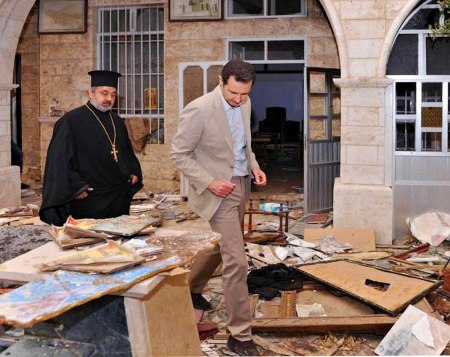
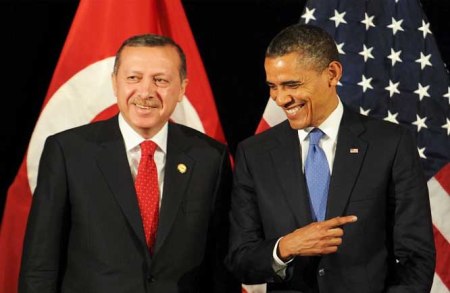
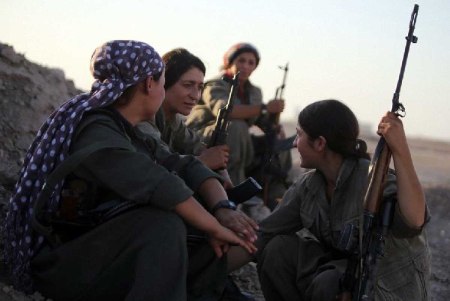
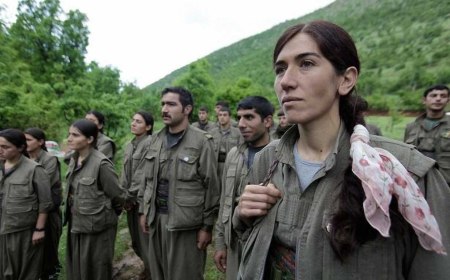
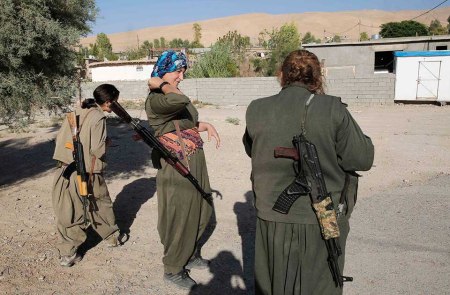

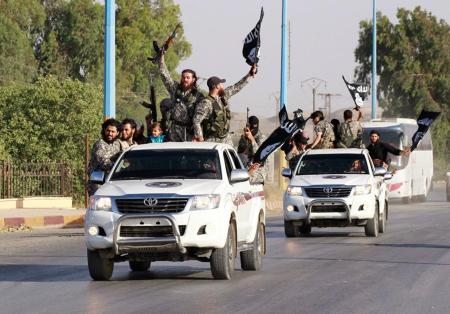
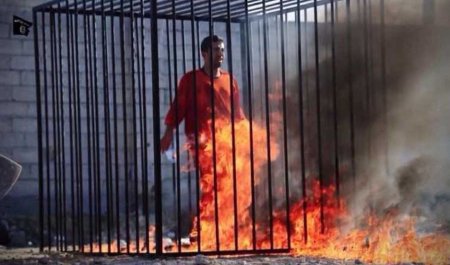
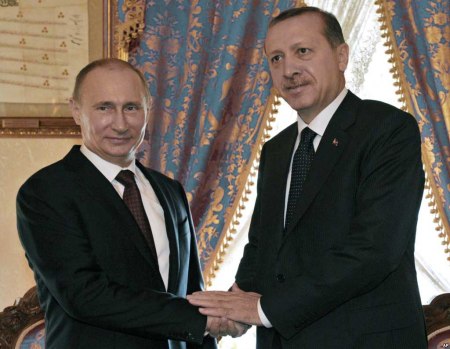

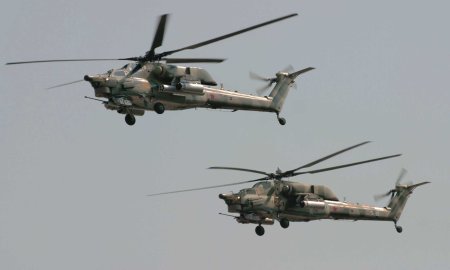

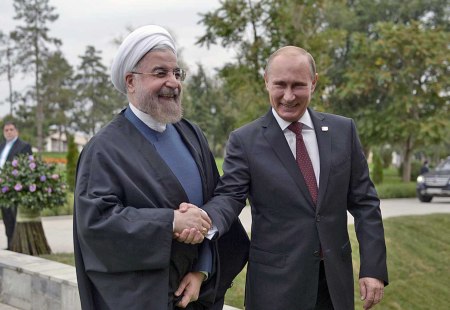
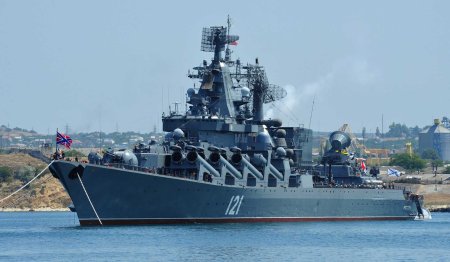

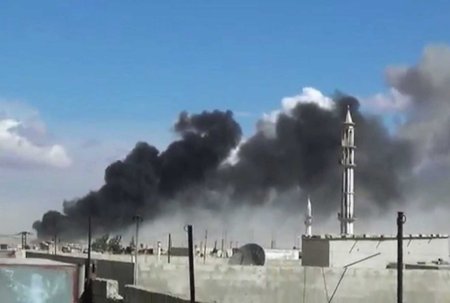
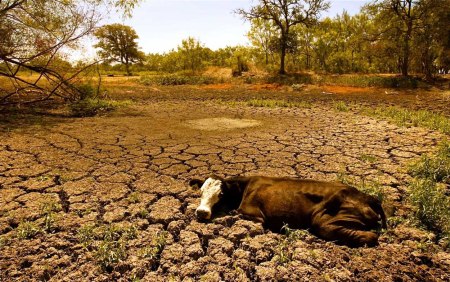
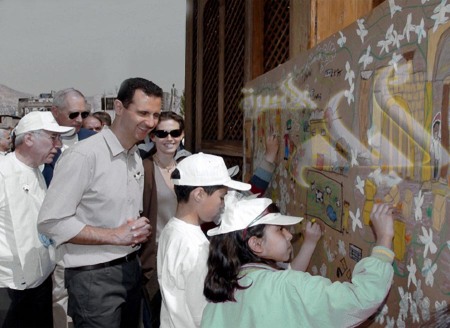
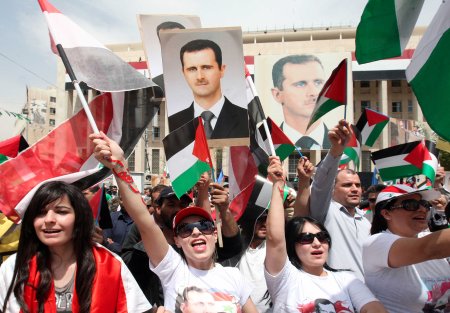
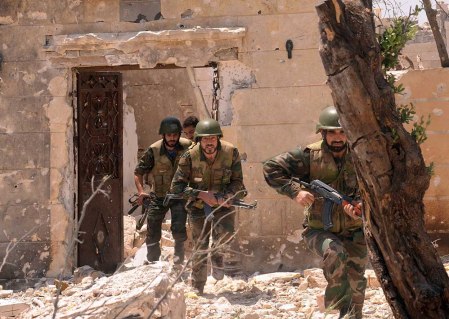
Keine Kommentare:
Kommentar veröffentlichen